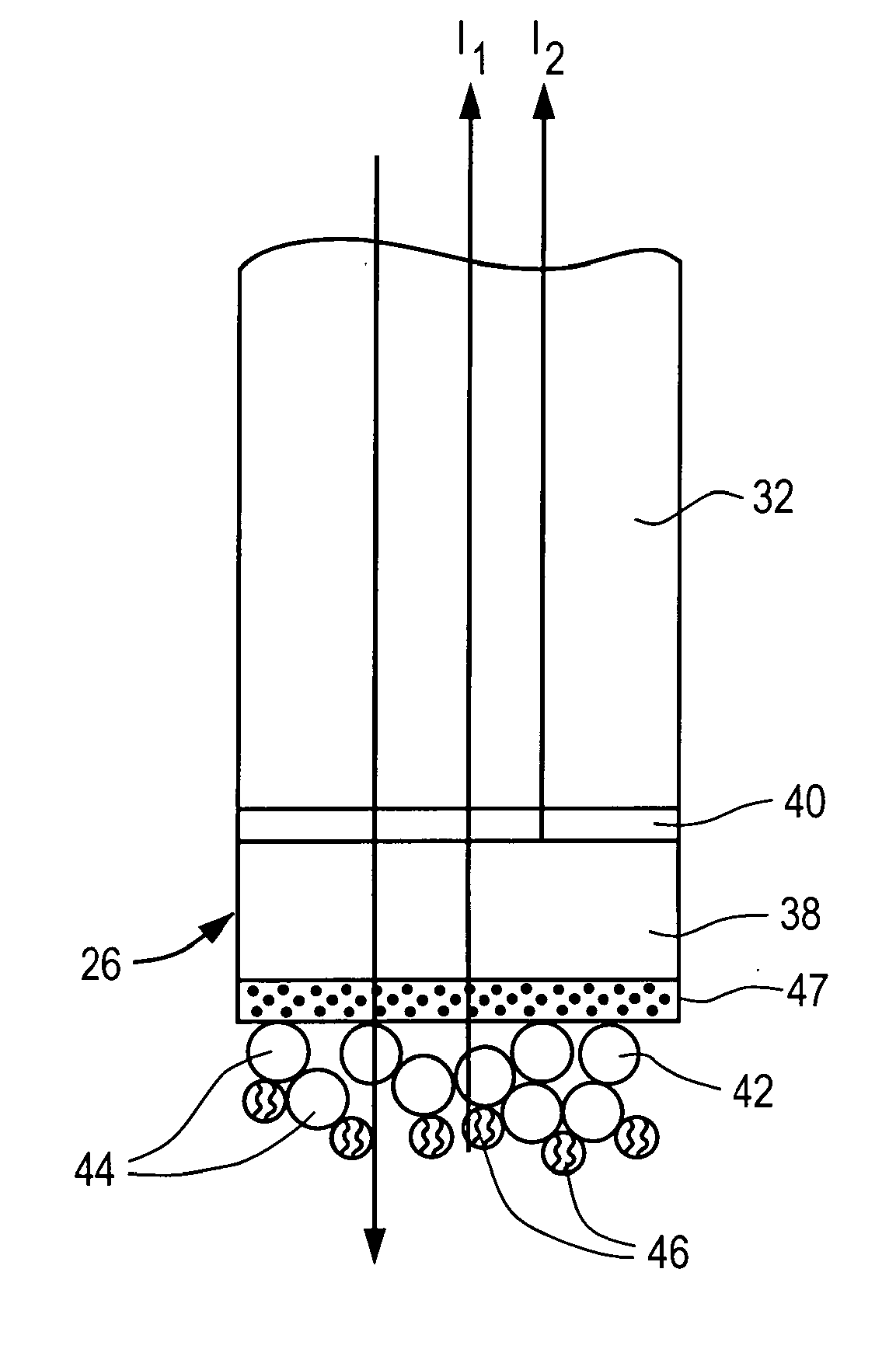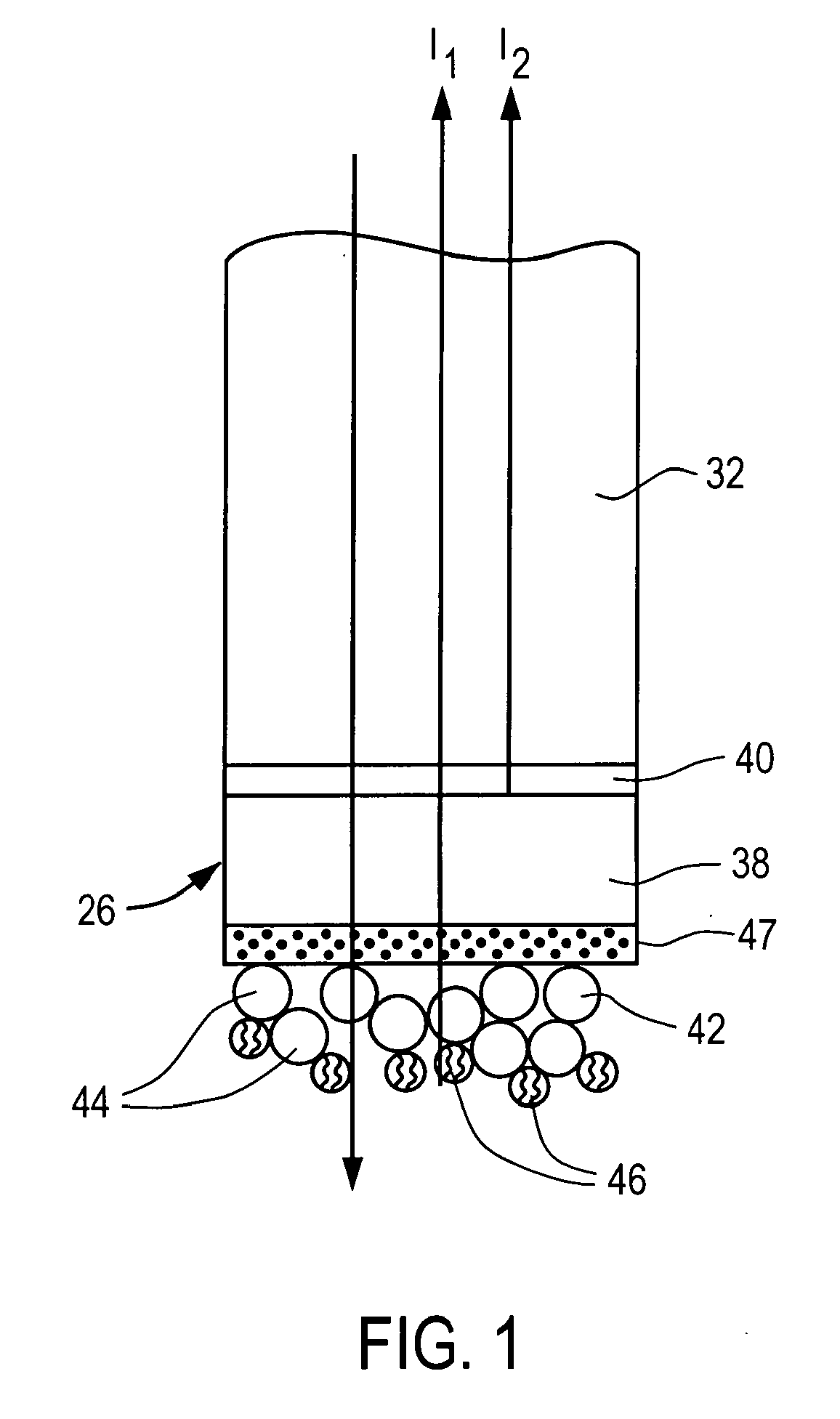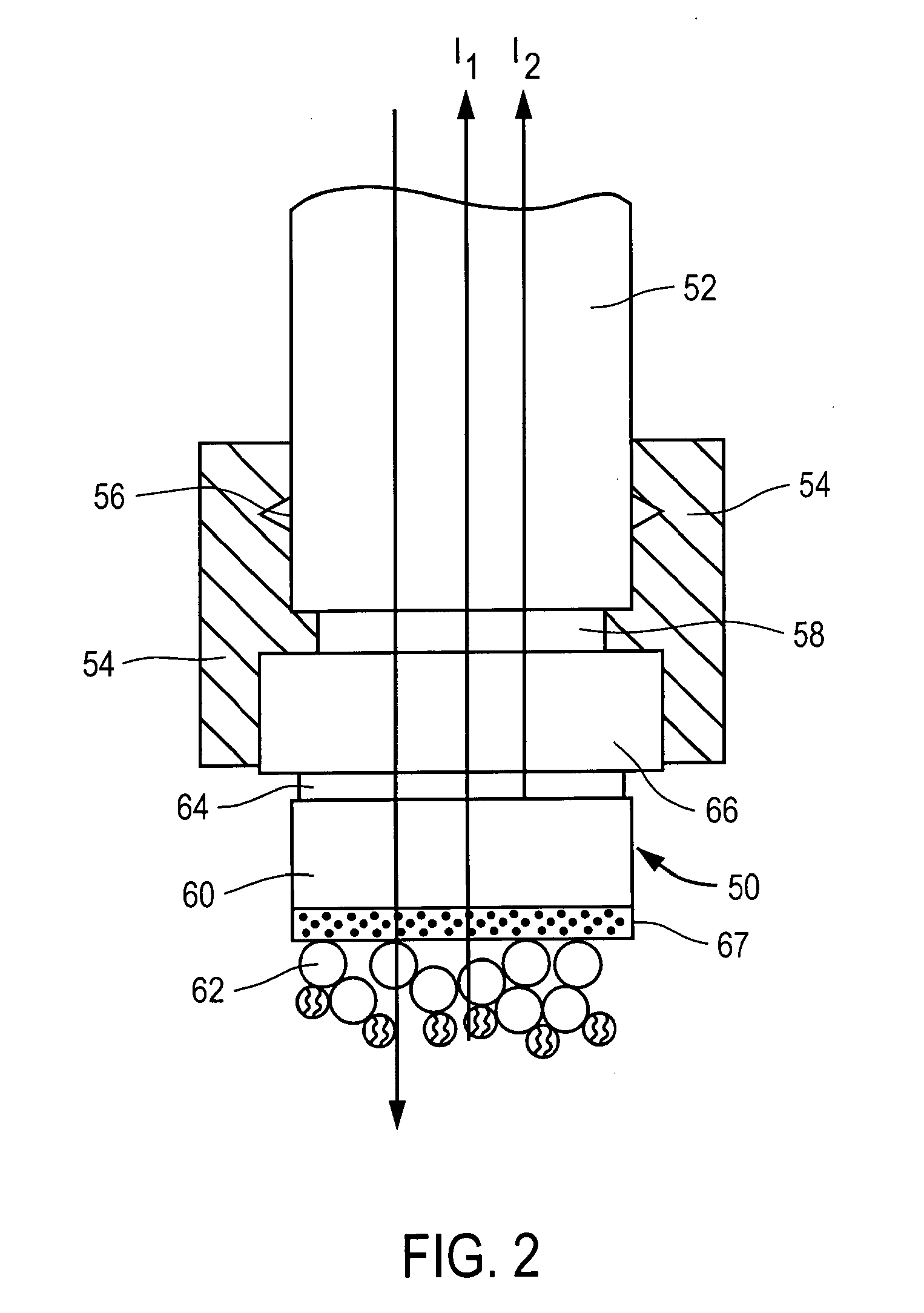Amine-Reactive Biosensor
a biosensor and amine technology, applied in the field of amine-reactive biosensors, can solve the problems of changing the interference between the two reflected beams, and achieve the effects of reducing non-specific binding, improving the native binding activity of a biomolecular interaction, and speeding up the analysis of biomolecular binding reactions
- Summary
- Abstract
- Description
- Claims
- Application Information
AI Technical Summary
Benefits of technology
Problems solved by technology
Method used
Image
Examples
example 1
Preparing an Aminopropylsilane Coated Tip
[0063]A two-layer configuration on the tip of an optic fiber in accordance with the embodiment illustrated in FIG. 1 was constructed. The thickness of the first Ta2O5 layer is 25 nm and the thickness of the second SiO2 layer is 770 nm. The fiber was purchased from Ocean Optics (Dunedin, Fla.). It was manually cut into segments that are 40 mm long. Both ends of these segments were polished to standard mirror surface quality. The polishing method used here was exactly the same as those for optical lenses and mirrors. One surface of these fiber segments was outsourced to an optical coating house for Ta2O5 layer and SiO2 layer. This vendor employed an ion-beam assisted physical vapor deposition (IAPVD) coater made by Leybold. IAPVD is a commonly used coating technique for anti-reflection and optical filters. The experimental steps included the following (all steps are performed at room temperature unless otherwise noted):
[0064]Aminopropyl coated ...
example 2
Adsorbing a Polycarboxylated Polymer to the Aminopropylsilane Coated Tip
[0065]In the initial steps for preparing an amine-reactive biosensor tip, an aminopropylsilane coated tip as prepared in Example 1 was coated with BSA, washed in PBS, and then stabilized with a sucrose coating, which allows for dry storage of the tip. The general scheme is illustrated in FIG. 4. As noted in FIG. 4, this results in a tip that has the polycarboxylated polymer (in this Example, the polymer is BSA) adsorbed through non-covalent interactions, and allows manufacturing to proceed up to this intermediate step. The tip is subsequently stored in dry form until it is covalently derivatized with an analyte-binding molecule. Further details for these steps are provided in FIG. 5. In this Example, the process steps are carried out in black, flat-bottom 96 well plates (available from Grener Bio-One, catalog number 655209). To coat the APS tip with BSA, the tip is immersed in 200 μL of a 1 mg / mL solution of BSA...
example 3
Covalent Attachment of the Polycarboxylated Polymer and the Analyte-Binding Molecule to the Amine-Reactive Biosensor
[0068]The amine-reactive biosensor of Example 2 was further processed to covalently attach both the BSA and an analyte-binding molecule (in this Example, several proteins were used as exemplary analyte-binding molecules protein). The general chemistry for this exemplified embodiment is illustrated in FIG. 6. The top panels illustrate the APS coated fiber (rectangle labeled “APS fiber”) to which the polycarboxylated polymer (ellipse showing four carboxyl groups) has been adsorbed. The carboxyl groups on the BSA are activated in an activation step by exposing the tip to a solution of EDC and NHS. Once the carboxyl groups are activated, the tip is brought into contact with a solution of an analyte-binding molecule (protein in this Example) in an immobilization step. A free amine in the analyte-binding molecule forms an amide bond with an activated carboxyl group on the po...
PUM
| Property | Measurement | Unit |
|---|---|---|
| distance | aaaaa | aaaaa |
| thickness | aaaaa | aaaaa |
| thickness | aaaaa | aaaaa |
Abstract
Description
Claims
Application Information
 Login to View More
Login to View More - R&D
- Intellectual Property
- Life Sciences
- Materials
- Tech Scout
- Unparalleled Data Quality
- Higher Quality Content
- 60% Fewer Hallucinations
Browse by: Latest US Patents, China's latest patents, Technical Efficacy Thesaurus, Application Domain, Technology Topic, Popular Technical Reports.
© 2025 PatSnap. All rights reserved.Legal|Privacy policy|Modern Slavery Act Transparency Statement|Sitemap|About US| Contact US: help@patsnap.com



